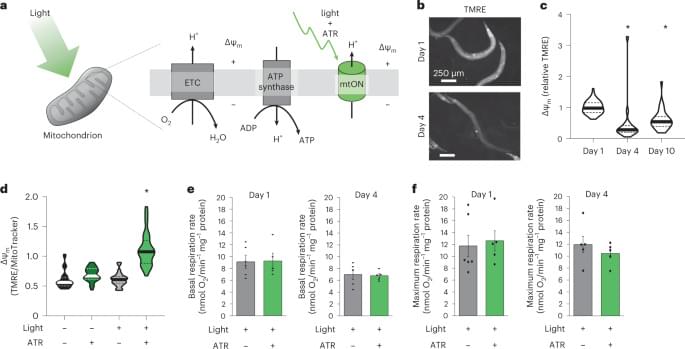Enjoy the videos and music you love, upload original content, and share it all with friends, family, and the world on YouTube.
Get the latest international news and world events from around the world.
This was a huge week for AI. Here are the 5 biggest announcements
From AI-generated video advancements to new AI-powered AR glasses, here were the 5 biggest announcements.




Bio-inspired wick enhances electronic chip cooling
A research team led by Prof. Ye Hong from the University of Science and Technology of China has developed an alumina ceramic bionic wick with finger-like pores inspired by the stomatal array of natural leaves. Their research is published in Langmuir.
As the performance of electronic chips continues to improve, their power consumption also increases, posing new challenges for cooling strategies. Loop heat pipes (LHPs) are a compelling cooling solution due to their high heat transfer capability, antigravity heat transfer, and absence of moving parts.
However, the differing requirements for flow resistance and capillary force make designing the pore structure of the capillary wick within an LHP challenging. Specifically, larger pores are needed for gaseous working fluids to reduce flow resistance, while smaller pores are necessary to provide sufficient capillary force for liquid suction.

Fighting Cancer From Within: GUMC Spotlights Efforts to Reprogram Immune System to Slow Tumor Growth
A Sept. 17 Georgetown University Medical Center (GUMC) seminar highlighted research on a revolutionary approach to cancer treatment: utilizing the body’s natural immune system to combat tumor growth rather than directly targeting cancer cells.
Alejandro Villagra, an associate professor in the department of oncology at the Georgetown University School of Medicine (GUSOM), shared his research in a talk hosted by the department of microbiology and immunology. The lecture focused on Villagra’s research on the manipulation of macrophages, a type of white blood cell active in the immune system, to combat the growth of cancerous tumors.
“Some people assume cancer research is about killing cancer directly,” Villagra told The Hoya. “We are focusing on the mechanisms we already have in order to kill cancer. So, these treatments, rather than the normal conception of killing the tumor, helps galvanize the immune system to indirectly kill cancer.”

Logan’s List of Entrepreneurship Resources
Compiling this list to help myself and others learn about the entrepreneurial landscape and find opportunities for funding! My list includes brief descriptions/explanations for each entry. Many (but not all) of these resources are aimed at academic researchers seeking to spin off companies based on new biotechnology inventions.

Optogenetic rejuvenation of mitochondrial membrane potential extends C. elegans lifespan
Year 2022 Solar powered mitochondria could enable humans to use light to recharge their mitochondria and extend life also their bodies would be recharged by fuel from the sun.
Using light to optogenetically power mitochondria, this study shows that opposing the age-related decline in mitochondrial membrane potential leads to increased healthspan and lifespan in Caenorhabditis elegans. This result points to mitochondrial charge as a fundamental regulator of biological aging.

New brain organoid model replicates human cortical domains
The group of Jürgen Knoblich at the Institute of Molecular Biotechnology (IMBA) of the Austrian Academy of Sciences, has developed a new method that allows scientists to cultivate brain organoids with distinct cortical areas and front-to-back patterning.
Together with collaborators at the Human Technopole and the University of Milan-Bicocca, they report a method that gives scientists a deeper look into human-specific brain development and disorders. The study was published in Nature Methods on September 18.
Brain organoids are extensively used to study human brain development. Derived from human pluripotent stem cells, the 3D models allow scientists to study unique properties of the human brain. Researchers use cortical organoids to answer fundamental questions such as how the human brain can grow to its large size or how the human brain’s long-range connections form.